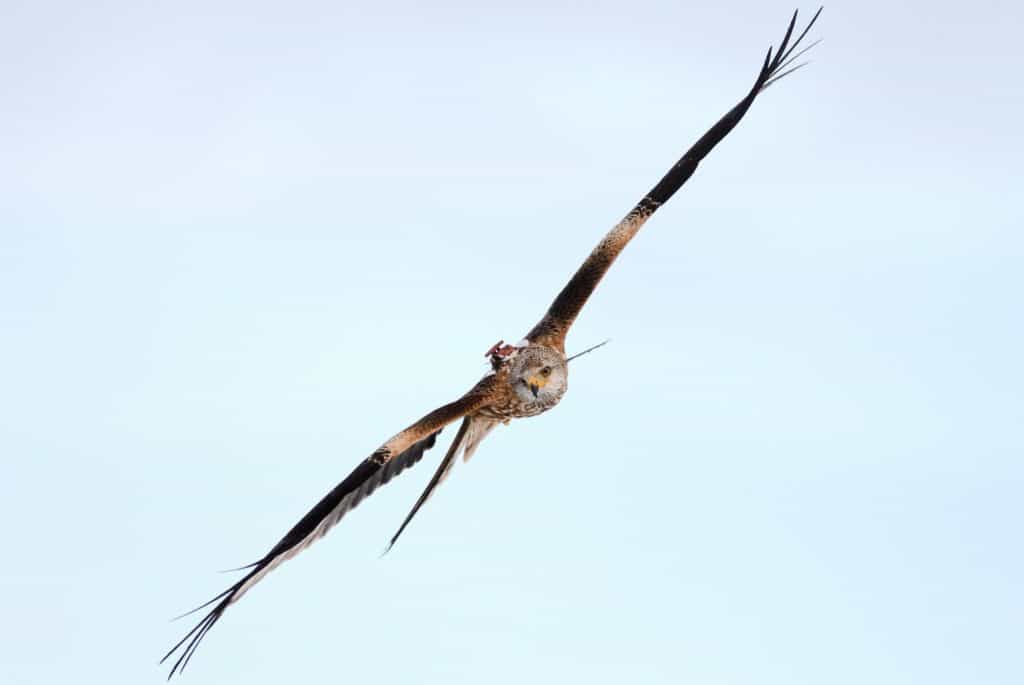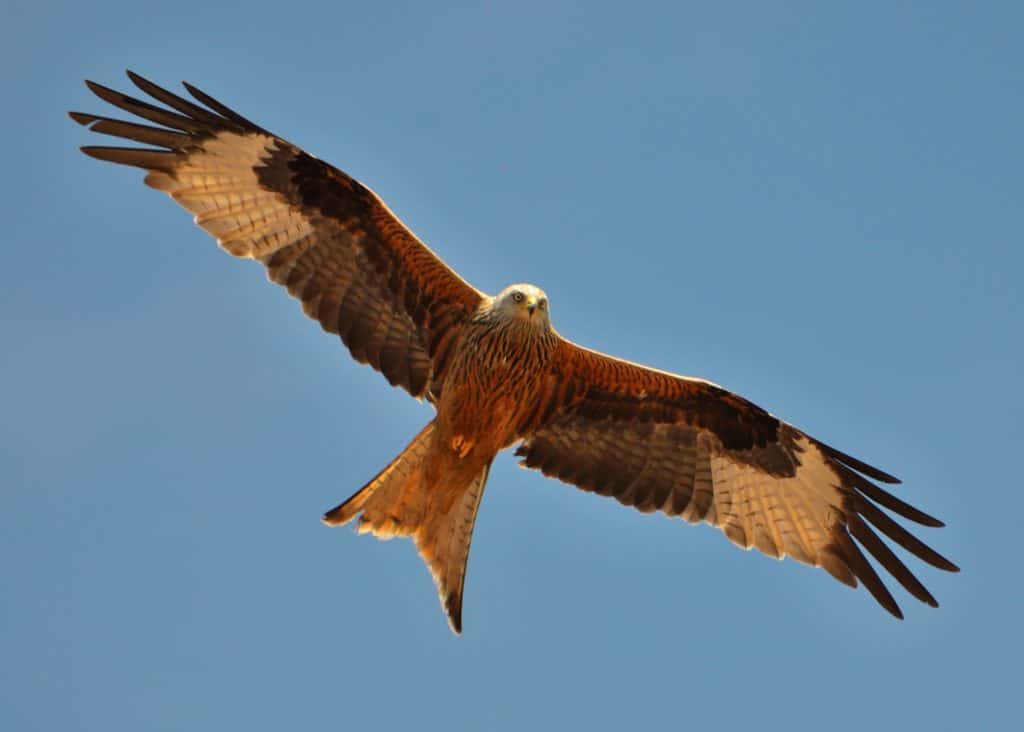Share this article
JWM: Red kites still need conservation despite downlisting
The International Union for Conservation of Nature downlisted red kites, a raptor species found widely across Europe, to least concern in 2020, after researchers found that the bird numbers were increasing across their global range. But new research tracking the birds in their winter ranges around the Mediterranean suggests the kites aren’t necessarily doing equally well everywhere.
In a study published recently in the Journal of Wildlife Management, Connor Panter, a PhD researcher in macroecology at the University of Nottingham, and his colleagues describe trends they’ve discovered from GPS tracking 36 tagged red kites (Milvus milvus) between 2015 and 2020. Since they tracked some birds for multiple winters, the researchers had received data for 70 wintering periods.
The birds were tagged in the Czech Republic, in an area close to the borders of Austria and Slovakia, and made their way down to three different areas: the French Pyrenees, the Iberian Peninsula in Spain and Portugal and Italy.

A red kite fitted with a tracking device. Credit: Pavel Štěpánek
The researchers found that winter ranges of red kites varied vastly in size. One younger red kite, for example, seemed to fly all over Spain and Portugal, covering 127,500 square kilometers during the winter months. The smallest range of a red kite, in contrast, was only 1.7 square kilometers. The latter kite’s range occurred next to a waste disposal area, and while the data wasn’t finely tuned enough for the scientists to be sure, Panter said it was likely the bird was feeding on food waste at the dump.
Of the 36 birds they tracked, 13 died during the study period. Six of these were confirmed to be killed by humans—five were poisoned and one was shot. However, poisoning likely isn’t intended to kill red kites—the scavengers probably end up feeding on baited carcasses left out to target other predator species like the European wolf (Canis lupus lupus), Panter said.
“Poisoning is still occurring and hasn’t stopped,” said Panter, who was working on his master’s degree at the University of Brighton in the United Kingdom at the time of the study. “[The birds] are very sensitive to poisonings.”
The team also looked at home range sizes for the birds—larger home ranges suggested they have to travel farther for food, which could bring an additional challenge. Red kites roost communally—up to 100 individuals at a time—in their winter ranges. In the morning they usually set out on their own to forage for the day. Their home range size is based on how much area they use to forage when they do go out.
The researchers found red kites had smaller home ranges in lowland areas, likely due to the kites’ preference for the milder winter temperatures there. They also preferred less tree cover, favoring agricultural areas, so they can find more prey and need less territory to hunt, Panter said.
However, the kites that arrived late to their winter ranges had larger home ranges during those months. This may be because the other birds had already taken the best land by the time they arrived, thereby making them fly farther to find food.
The best foraging areas are likely those near villages where there is a lot of human waste for the kites to scavenge. But these human-provided resources can only support so many kites, and latecomers may be pushed out of these resource-rich areas.

Red kites are common in many parts of their range, but some populations may still be shrinking in Mediterranean Europe. Credit: Noel Reynolds
In places with less waste left out for the birds, like in Portugal, they didn’t show up as much. There are stricter laws in Portugal than Spain regarding removing livestock carcasses after they die. Since red kites at least partly rely on scavenging, this action probably has a negative impact on the birds’ presence in Portugal in the winter. Furthermore, Spain sometimes purposefully feeds red kites with butcher waste, whereas Portugal doesn’t. Panter and his colleagues recommend that Portugal begin supplemental feeding programs to improve red kite numbers there.
Panter said that red kites aren’t doing equally well in all parts of their range, despite being downlisted by the IUCN. The reason for that downlisting, Panter said, is in part because they were reintroduced to parts of Europe in more recent years, which helped bolster global populations. But, he believes, they remain a species of conservation concern in these winter populations they studied.
This article features research that was published in a TWS peer-reviewed journal. Individual online access to all TWS journal articles is a benefit of membership. Join TWS now to read the latest in wildlife research.
Header Image: Researchers tracked red kites during their winter range. Credit: Airwolfhound








